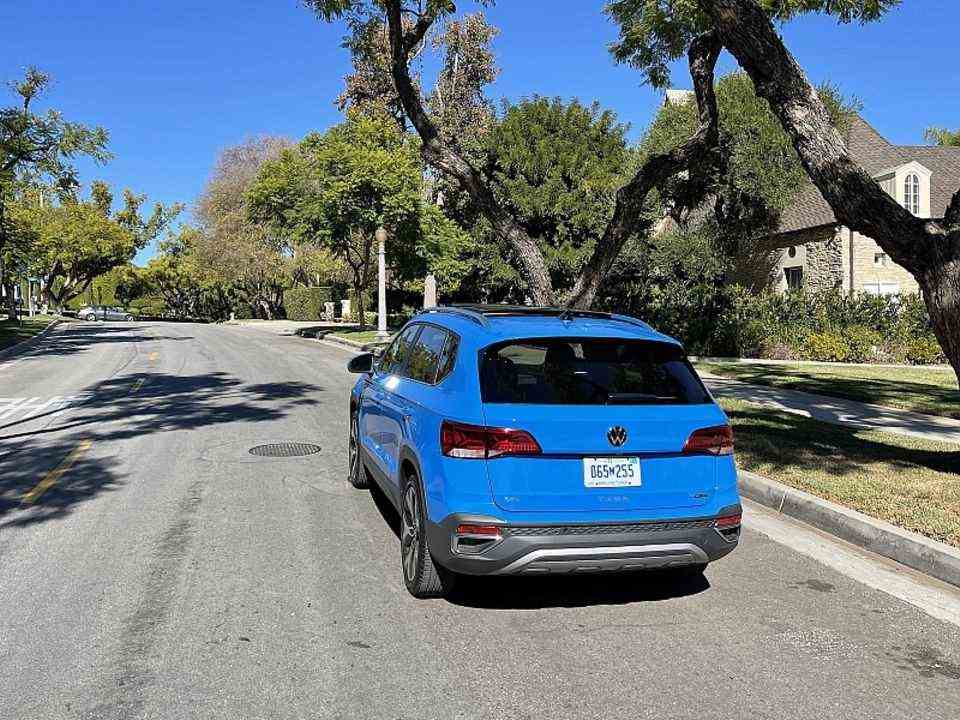Electric car plan
How VW wants to catapult itself to the forefront of electromobility by 2025
VW wants to really pick up speed in the electrification of its vehicles (symbol photo)
© Bert Harzer / Eibner-Pressefoto / Picture Alliance
In July, VW presented its new “New Auto” strategy, with which the car manufacturer intends to significantly advance electromobility. Volkswagen plans to become the market leader in electromobility by 2025. A major change is required for this. How is that supposed to work?
VW sees its future in electromobility. In 2026, every fourth car sold is expected to be an electric car. The Wolfsburg-based carmaker has presented specific plans for this, which should show how Volkswagen wants to catapult itself to the top of electric mobility by 2025. In the “planning round 70” on Thursday, VW announced investments worth billions.
According to its own information, the group wants to put a large part of its planned investments in electromobility and digitalization. In total, it should be 89 billion euros, which corresponds to around 56 percent of the total investment (159 billion). Volkswagen has thus increased its planned investments by 16 billion euros. According to the Wolfsburg-based company, the announced investments account for the largest share of the Group’s total investments for the first time.
“The additional investment requirement arises mainly from the accelerated ramp-up of e-mobility as part of the Green Deal as well as from the establishment of our own battery giant factories and vertical integration in the battery value chain,” it says. VW boss Herbert Diess announced: “In the world of the New Auto our business model is changing radically – Volkswagen is changing from a classic automobile manufacturer to a vertically integrated group with strong brand groups and leading global technology platforms.”
21 billion euros for VW locations in Lower Saxony
VW is investing around 21 billion euros in the Lower Saxony locations. Hanover will be completely electric in the medium term. In addition to hardware for the charging infrastructure, axles for models of the so-called new modular electric drive kit, on the basis of which the ID models are created, are to be produced there in the future. And the first Artemis vehicle, an autonomously driving electric car, is to be built here. Volkswagen sees this as “currently the most important future project”. In addition to the development of autonomous driving, the construction of the body for a new Bentley model is on the plan. In addition, the ID. California adopted another vehicle derivative for the location. This brings an electric touring vehicle onto the market.
In Wolfsburg, VW is starting the Trinity project, for which a factory outside the current factory premises is being considered. There “an innovative and competitive battery-electric and level 4-capable car of the next generation is to be created and at the same time production is to be set up for the future,” said Volkswagen. The ID.3 is to be built at the site from 2024. Until then, the group wants to implement a “partial production with delivery from Zwickau”. The aim is to “serve additional market volume that Zwickau alone could not meet in the light of good long-term occupancy forecasts”. VW plans to start a second production of electric vehicles on the current factory premises by 2030.
In Braunschweig, Salzgitter and Kassel, further investments are planned for the expansion of the existing electric vehicle production of the battery system, rotor / stator and electric motor. In addition, key components of the SSP mechatronic platform are to be manufactured at these locations in the future.
Car manufacturer plans “European battery hub” in Salzgitter
Salzgitter is to become the “European battery hub”. Here the group wants to invest around two billion euros in order to be able to produce battery cells in its gigafactory from 2025. The car manufacturer wants to bundle the development, planning and production control of the battery activities in Salzgitter.
Lower Saxony’s Prime Minister Stephan Weil, who is also a member of the Volkswagen AG Supervisory Board, said: “(…) The fact that 21 billion euros are flowing into the Lower Saxony locations (…) is once again a sign that the global Volkswagen concern is committed to its Lower Saxony roots . We are pleased about this strong signal to secure around 130,000 jobs. “
Ultimately, VW wants to focus on electromobility and reduce its spending on hybrid vehicles by around 30 percent to eight billion euros. The proportion of electric vehicles is expected to increase from around five to six percent today to around 25 percent in 2026, it says.
Porsche models in Leipzig
Further investments by the group envisage the production of two Porsche models of the electrical PPE construction kit for the premium segment in Leipzig. In addition, “the scaffolding of the Audi E6 vehicle family in the successor generation” is to take place in Neckarsulm. The plant in Brussels is to build the new Audi Q8 e-tron from 2026 and in Spain the construction of electric vehicles is planned at the multi-brand Martorell plant from 2025. Electric SUVs are to be manufactured at the multi-brand plant in Pamplona. However, it is still unclear whether this will actually happen. That depends on the general framework and government funding, explains VW.
Sources: VW press release “Planning round 70: Volkswagen pushes electrification of its European locations and presents transformation plan for Wolfsburg”, VW press release “NEW AUTO: Volkswagen Group opens up new value drivers for emission-free and autonomous future of mobility“


